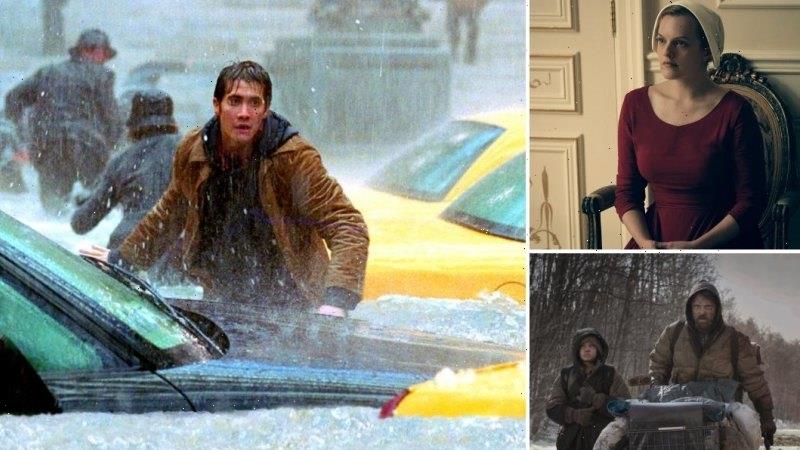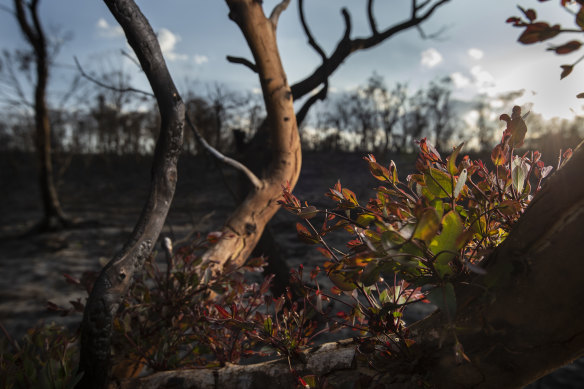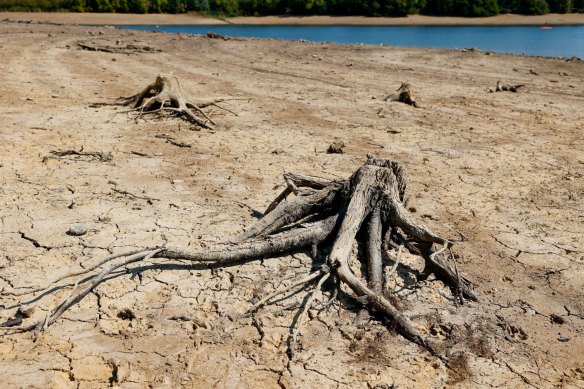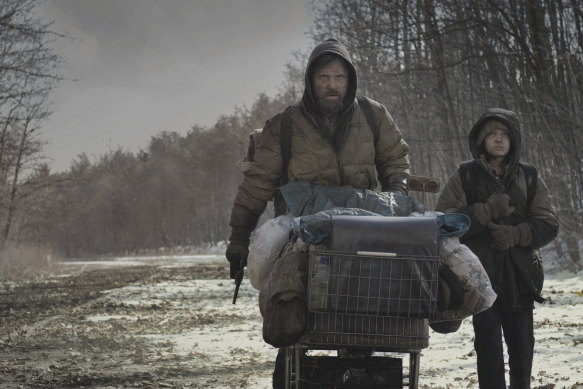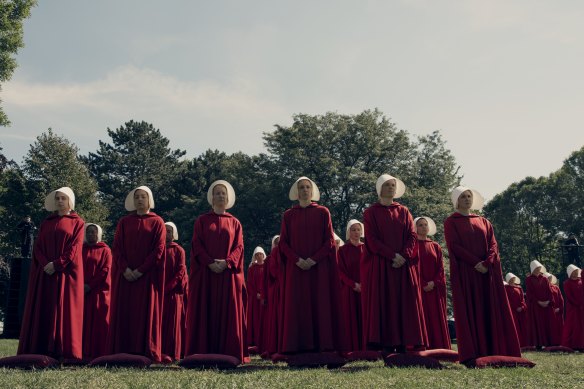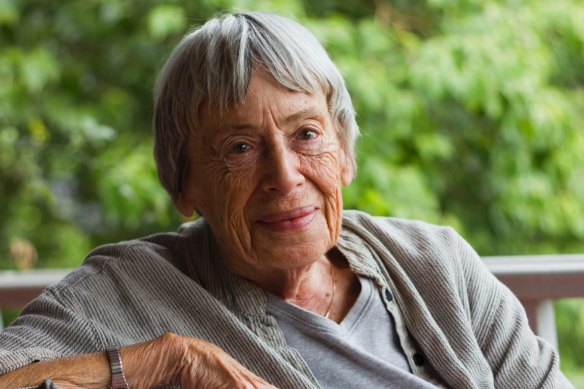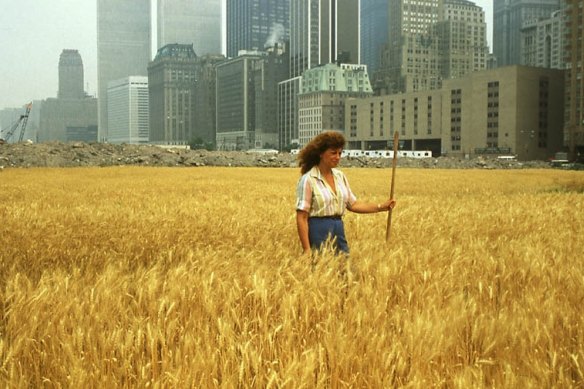By Olivia Laing
The bush near Clarence Dam on the Bells Line of Road begins to regenerate after the Gospers Mountain fire in December 2019.Credit:Wolter Peeters
Why don’t we do the things we should? Why in particular don’t we act on climate change, even as we can see its horrifying effects taking place around the world, curtailing all our futures?
Back in the 1990s, I was an environmental activist, living in treehouses in woods in England threatened by road-building projects. At the time, the idea of climate change was far less well known or understood. The kind of non-violent direct action I was involved in had two aims. Living in the trees was a way of protecting specific landscapes from destruction. Most of those protests failed, and a few were successful. But it was also a spectacle and a teaching opportunity, designed to draw attention to the connections between road building, car use, habitat destruction and climate change.
This was slow, often nightmarishly frustrating work. Nobody wanted to know. Climate change was at once too abstract and too depressing. It was impossible to make people see the connections between behaviour in one country and its impact elsewhere. It was also hard, in those more settled years, for many people to imagine that the kind of drastic, apocalyptic changes being predicted were even possible within the suggested time frame.
That isn’t where we are today. I’m looking now at the crispy, dead plants in my garden, the legacy of record temperatures in England. During the heatwave here, rivers dried up, runways and rail tracks melted, and houses and fields burst into flames, as they habitually do not in our once cold climate.
The exposed bed of the Ardingly Reservoir during England’s recent heatwave.Credit:Carlos Jasso/Bloomberg
Scenarios modelled for decades ahead are already in progress around the world. We can see it happening. There’s consensus among scientists, and ignorance itself is no longer the primary problem we face. The trouble is that whereas once it was considered too early to act, people now seem to feel that it’s already too late. What was nebulous and uncertain is suddenly inevitable. The right time to act never seemed to arrive at all.
There are a number of reasons for this. Most people are far more aware of the fact of climate change, but remain confused about the necessary responses, in particular, what can or should be done on an individual rather than industrial, national or global level. In addition, there is the active and generously funded work done by climate change deniers and their advocates to fuel scepticism and doubt.
This widespread confusion exists alongside other difficult and sometimes unbearable feelings. Fear about the threats ahead, from food scarcity and water shortages to war, pandemics and a commensurate rise in repressive regimes. Grief and despair at the enormous losses of mass extinction, the despoiled oceans, the burning forests. Horror, rage. A desire to snatch the pleasures of late capitalism while they’re still available.
The combination is so emotionally and intellectually overwhelming that it causes a kind of shutdown or short-circuit. Some people, it’s true, simply don’t care about the future of the planet, or rely on technological solutions, or fantasies of escape, either to other planets or the infinite superficialities of the multiverse. But in many cases, I think this overload of information and emotion is what drives the frightening inertia we see playing out across the world, especially in richer countries that have so far been sheltered from the most drastic manifestations of rising temperatures. It might have different causes, but it’s the same problem activists faced in the 1990s: mass paralysis.
A solution to this strange conundrum is desperately needed, and I’m interested in the role the imagination might have to play. The creative responses we’ve seen so far have been predominantly concerned with imagining worst-case scenarios. Works such as Cormac McCarthy’s The Road, say, make the breakdown of civilisation the inevitable consequence of environmental catastrophe. The horror of poisoned rivers and broken infrastructure is redoubled by what it produces, the bands of rapists and cannibals who prey on the weaker citizens of a failed republic.
The creative responses we’ve seen to climate change, including in Cormac McCarthy’s The Road,have been predominantly concerned with imagining worst-case scenarios.
Perhaps that spoiled landscape is exactly where we’re headed, but I’m increasingly sceptical about dystopias as a tool for political change. The problem with art about climate change in particular is that it contributes to the sense of fatalism and inevitability that is at the core of our lack of action. Sounding a warning does not necessarily change behaviour. The stories we tell are powerful, but perhaps not in the way we think. The Handmaid’s Tale, it must be admitted, did not ward off the dismantling of Roe vs Wade.
We become accustomed to what we once found shocking. The bad future lives inside people’s heads, gathering its own momentum. It seems to me we’ve put too much faith in the inoculatory power of terrifying simulations, rather than realising that for certain viewers they might suggest appetising possibilities, while for others they confirm dread, magnifying the emotions that contribute to paralysis and foreclosing on any more liberating or enlivening alternatives.
If despair is impeding us from acting, is there a way that art can generate hope? That’s what I feel hungry for right now: art that refuses to participate in envisaging structures of dread, art that sets the imagination to work creating new ways of inhabiting and repairing the earth, ideally without replicating the habits of the society that caused the damage in the first place.
Not long ago I was on a radio panel discussing these questions. We were asked to respond to the work of the design collective Superflux, who create installations that show what life might look like in a possible near-future of climate change. In the one I liked best, they built a simulacrum of a London apartment in 2050. It looked at once familiar and deeply eerie. A purple glow leaked from an improvised food production stack, where mushrooms and cabbages were being grown in a homemade fogponics system. Wild fox skins were draped over IKEA kitchen chairs. Outside the window, the familiar London skyline was subtly amended. Every building was covered in a bodged clutter of solar panels, water tanks and wind turbines.
Are the dystopian stories we tell, such as The Handmaid’s Tale, as powerful as we think in fuelling real-world change?
What I liked so much about Superflux is that they weren’t trying to convey a doomsday scenario, but to foreground adaption and creativity. The people in this speculative future might have been reading Pets as Protein but they also had snacks and children’s toys. It was a future you could imagine entering, where reduced resources had created an upsurge and not a decline in creativity and care.
Being able to imagine that we can change is crucial right now. And the fact is that we can. During my time in the trees, one of the most pervasive responses I heard was that the drastic changes needed to keep climate change within survivable limits were impossible, that modern life couldn’t slow its trajectory as abruptly as was needed. And yet the world did change almost literally overnight during the pandemic. People are endlessly creative in how they arrange their lives and it’s that adaptability and capacity for mutual aid that needs to be foregrounded now. Air travel can be reduced. Consumption habits can shift. Farming can be different.
Art doesn’t directly bring about this sort of change. Throughout history, real systemic change has come because of direct action, because of bodies on the streets. Women didn’t get the vote by voting. Civil rights wasn’t achieved at the ballot. The modern gay rights movement started as a bar riot against discriminatory policing. Protests such as the international school strikes and Extinction Rebellion will undoubtedly pay an increasing role in driving change as the climate heats further. I suspect if governments remain recalcitrant many people will end up serving prison sentences to secure the planet’s future.
That said, art can and does change the environment in which political realities occur, both by piercing inertia and by introducing new ideas. An example of the first category is the painter Paula Rego’s Abortion series, made after the failure of the 1998 referendum to legalise abortion in Portugal. After she heard the result, Rego began a series of pastel drawings documenting the reality of illegal abortion. A girl in school uniform squats over a bucket. An attractive woman in a smart red dress braces herself on a gurney, legs spread over two canvas chairs, her apprehensive expression testament to the risk and humiliation, the unsafe room in which the law has set her.
In the run-up to the next referendum in 2007, these images were published in a Portuguese newspaper, and are credited with helping to achieve legalisation. They did not invent a worse future. They countered inertia by making the abstract real, depicting the consequence of inhumane laws on actual lives, actual bodies, actual faces.
As for the second category, I’ve written before of the deep effect a novel called Always Coming Home by Ursula Le Guin has had on me. Le Guin was a visionary writer with a wild gift for generating future societies of many kinds, from The Left Hand of Darkness to the complex utopia of The Dispossessed. In Always Coming Home, she uses a set of fragmentary stories to imagine a society in California centuries after some unspecified ecological catastrophe. Le Guin’s father was an anthropologist and she brings to this invented people deep knowledge about indigenous cultures of the past.
For me, it modelled the possibility of a human society that related differently to the earth, that didn’t consider itself the pinnacle of a hierarchy of species, the tip of a Linnean triangle, but as part of a complex continuum, a luminous web of being. It wasn’t a perfect world. There was all the ordinary grit of human existence, of different personalities failing to accommodate, and that was powerful too, because it made it feel more like a possibility than a fantastical dream.
Ursula K. Le Guin generated future societies of many kinds.Credit:Ronald Schalekamp
Listen to its beautiful first sentence. “A long, long time from now, in the valleys of what will no longer be called Northern California, might be going to have lived a people called the Kesh.” What else might be going to have lived, in the future we can’t yet see, the future we seed by our own behaviour every single day? What Le Guin understood is that dreams of the future possess the power to shape the future. We cannot make what we can’t envisage.
Her Californian vision has not yet come to pass, but other artists have begun to manifest experimental utopias up there, in a state already badly afflicted by rising temperatures, drought and wildfires. In 2014, the American artist and utopian activist Fritz Haeg bought a 1960s commune in Albion, California, restoring it with a new community of mostly short-term visitors, who live there, participate and then move on. Salmon Creek Farm is a homestead-cum-sanctuary, simultaneously a place to practice communal off-grid food production and a living work of art.
A before and after photo showing the conversion of a family home, as promoted by Fritz Haeg in his book, Edible Estates.
The farm is a natural outgrowth from Haeg’s previous project, Edible Estates, which proposed the conversion of America’s 30 million useless acres of lawn into organic vegetable gardens. Edible Estates likewise had two forms, as a work of conceptual art and as a real ecological endeavour, which existed as community projects in Kansas, New Jersey, California and London. The London project continues today, developing community-growing spaces on council estates. These transform the dismal strips of municipal grass into nourishing, beautiful zones that provide food and contact between neighbours.
Ideas are fertile, seeding in strange and unexpected places. Haeg traces his origins as an artist to a photograph he saw in a magazine at the age of 13. A woman was walking through a golden wheat field, which had magically sprouted beneath the towers of Lower Manhattan. It was the artist Agnes Denes, who for her 1982 work Wheatfield: A Confrontation sowed, tended and harvested a crop of wheat on a vacant lot in what is now Battery Park, in the shadow of the financial district.
Agnes Denes’ Wheatfield in 1982.
What did that image encode? Freedom, nourishment, possibility. The dream that the era of the towers might end, and something more fruitful could emerge. Haeg carried it with him, and it fuelled his own creations. I wonder what they’ll generate in turn?
Everybody: A Book About Freedom is out now. Olivia Laing will appear virtually at the Antidote festival at the Sydney Opera House on September 11.
The Booklist is a weekly newsletter for book lovers from books editor Jason Steger. Get it delivered every Friday.
To read more from Spectrum, visit our page here.
Most Viewed in Culture
Source: Read Full Article
